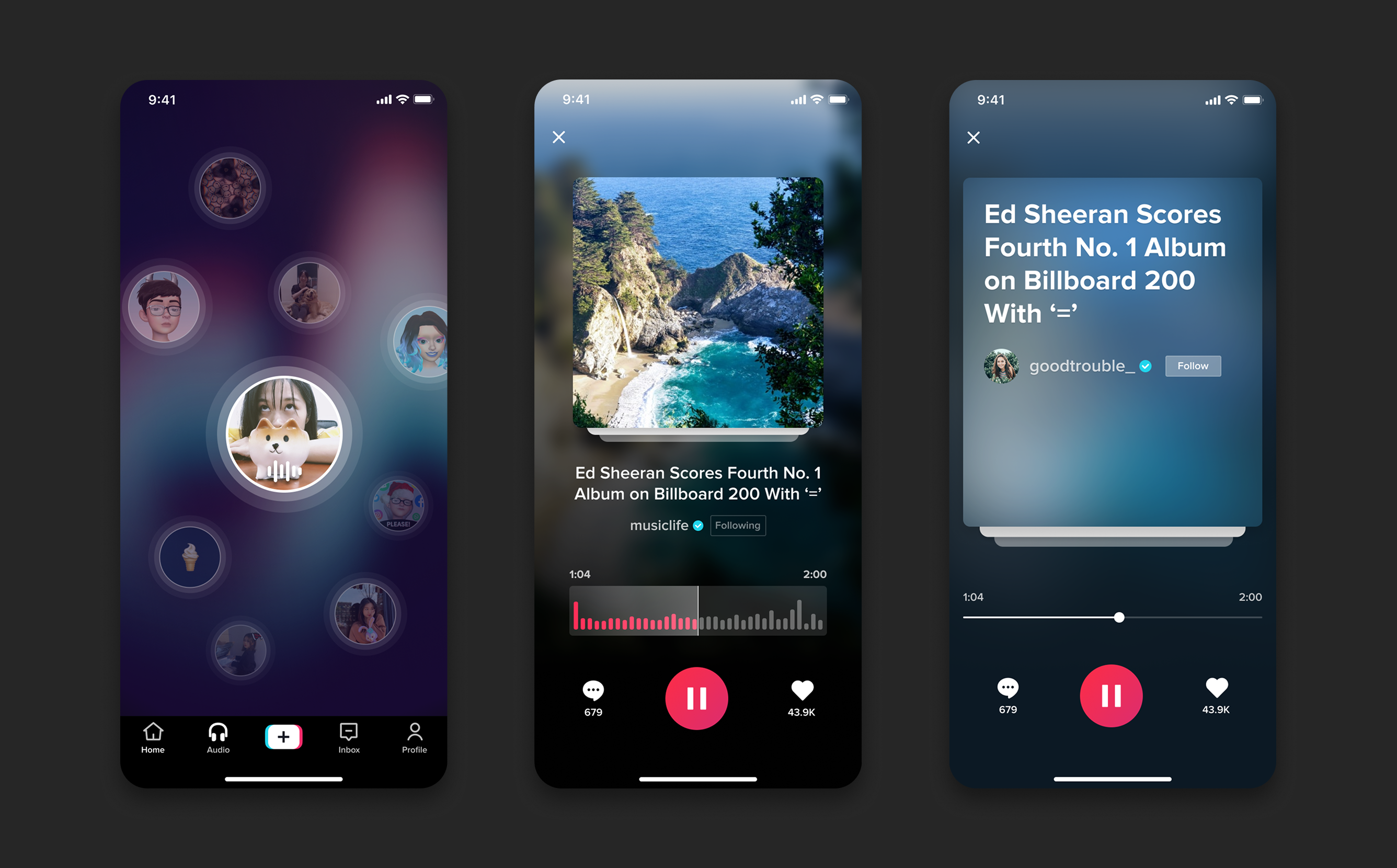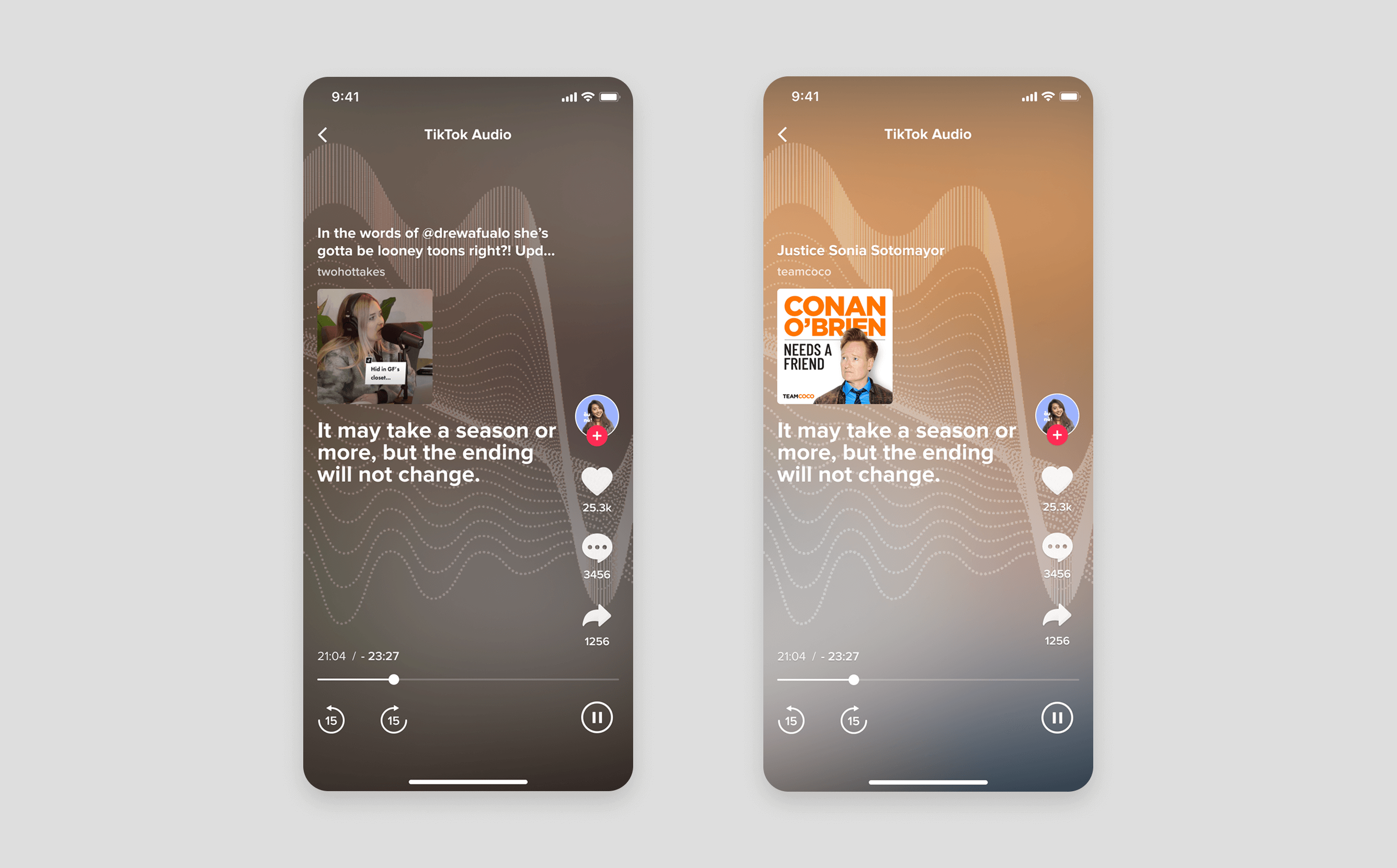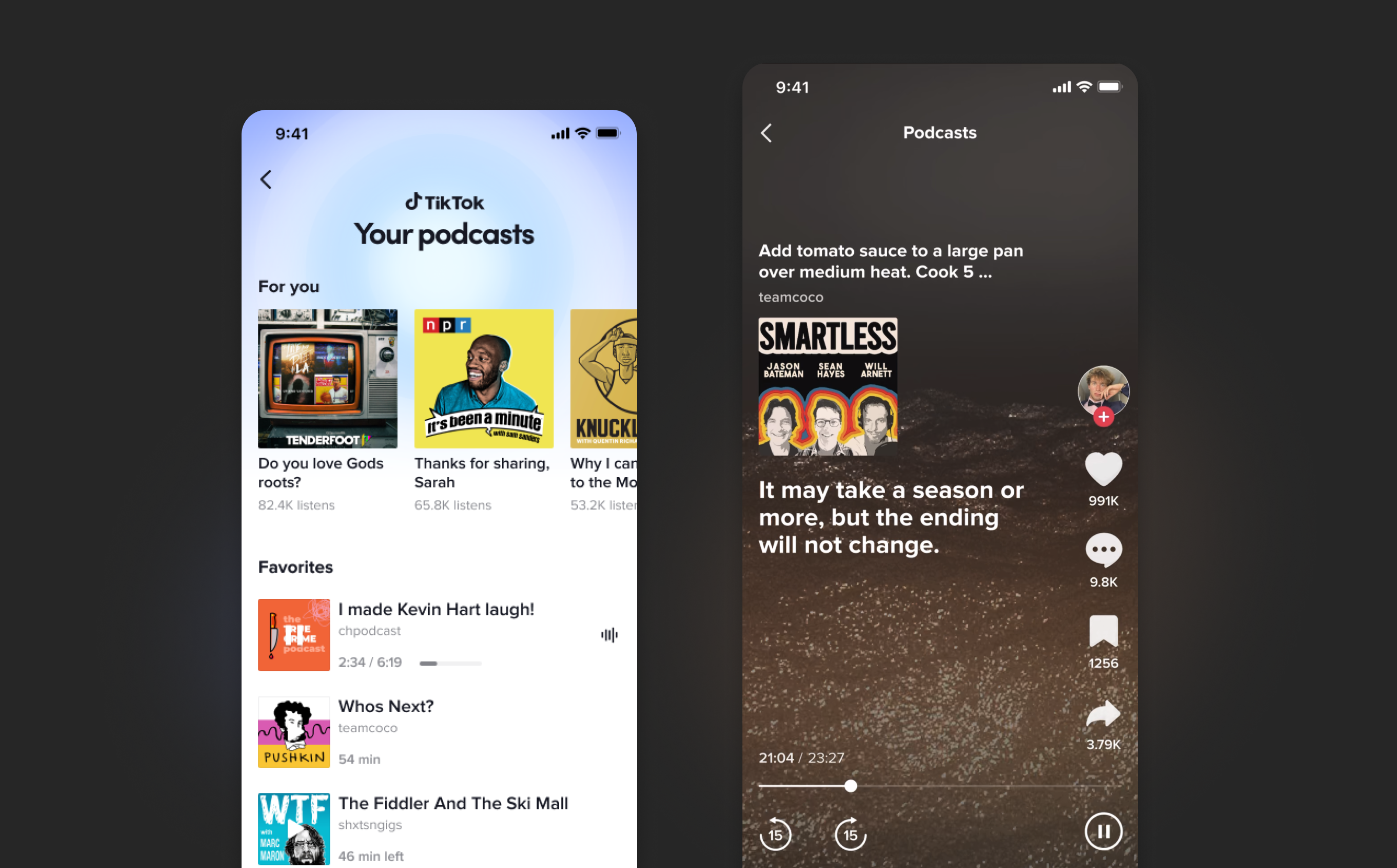TikTok Podcast
Project Overview
The Challenge:
TikTok, a platform renowned for its short-form video content, aimed to explore new content formats to expand user engagement and retention. With a significant market of weekly podcast listeners in the US, an experiment was initiated to integrate audio content, specifically targeting scenarios where visual consumption isn't feasible (e.g., during chores, commuting).
The Goal:
To seamlessly introduce a podcast feature into TikTok, allowing users to consume pure audio content, thereby capturing fragmented user time and increasing overall platform engagement.
The Problem: Tapping into the Audio Market
TikTok's existing content ecosystem primarily revolved around visual media (short videos, long videos, image-text posts). The burgeoning podcast market presented an opportunity, but also a challenge: how to introduce a fundamentally different content type (audio) into a visually-driven platform without disrupting the core user experience or appearing out of place? The primary problem was to design an intuitive and engaging podcast experience that felt native to TikTok, encouraging discovery and consumption of longer-form audio content.
Design Explorations
I began by exploring various interface styles, layouts, and entry points for the podcast feature. The goal was to create tangible designs that the team could react to and discuss.

Key Design Decisions and Solutions
Maintaining Brand Consistency in the Feed
A key consideration was ensuring that audio content didn't feel alien in the predominantly visual For You Feed. We decided to retain TikTok's signature right-side interaction area to maintain user familiarity and brand consistency. The visual presentation of podcast snippets was designed to be informative yet unobtrusive.
The Immersive Player Experience
For the full podcast listening experience, we designed a new player layout. Acknowledging that this was a departure from typical audio players, we opted for a left-aligned player style that hierarchically presented the title, creator, cover art, and subtitles. This was a deliberate choice to align with TikTok's established brand style and app layout. We also considered UI details like handling long titles.

Dynamic Background
To enhance immersion for audio content – which is heard, not seen – we used dynamic, color-shifting backgrounds. I extracted the dominant color from the podcast cover art and generated a top-to-bottom gradient using lighter and darker shades of the same hue.
Podcast Mode Entry Point
Discovering podcasts solely through the feed was deemed an unstable experience. To provide a consistent access point, a 'Podcast Mode' entry was added to the user's Profile page.

Creator Profile Page Optimization
Our analysis of existing podcast content revealed that many creators use visually similar cover designs, resulting in a lack of distinction across profiles. To maintain visual consistency between the audio content in the feed and the creator’s profile page, we designed a tailored cover display for creator's profile page. By extracting the dominant colors from podcast covers and distributing them randomly across the profile page, we introduced visual variation and reduced the uniformity of presentation.

User Flow
A key aspect was defining how users would discover, engage with, and manage podcast content. The primary user flow was designed as follows:

Outcomes and Impact
The TikTok Podcast feature, including its page layout, dynamic background effects, and color extraction logic, was recognized as a company-level design asset. It has since been filed for design patents globally and has become a standardized component for audio-related features within TikTok.
Learnings and Reflections
Introducing New Content Types:
It highlighted the complexities of integrating a fundamentally different content medium into an established platform with strong user habits.
Designing within Constraints:
Working within TikTok's design system emphasized the importance of creative problem-solving and iterative design to achieve innovation.
Pragmatic Decision Making:
The placement of the Podcast Mode entry point was a reminder that design decisions are often a balance of ideal user experience, business priorities, and technical feasibility.
Measuring Design Success Beyond Feature Survival:
Not all innovations are measured by a feature’s longevity—some live on through the frameworks and thinking they inspire.

